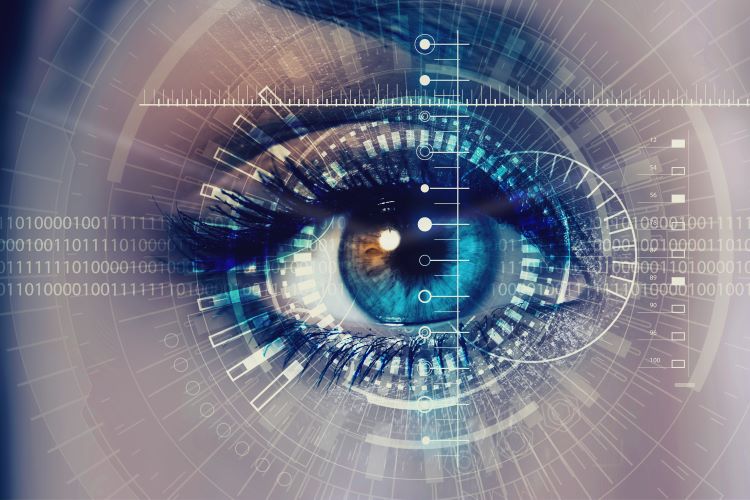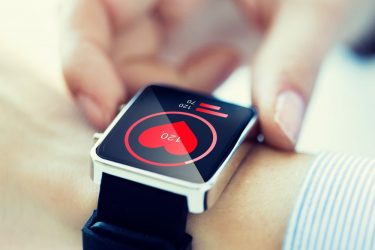Incorporating patient-generated health data in safety and efficacy studies
Posted: 26 January 2021 | Alison Bourke (IQVIA) | No comments yet
In this article, Alison Bourke, Scientific Director of the Center for Advanced Evidence Generation at IQVIA Health, explores how digitally-connected active and passive data sources are shaping the development of patient-centric treatments and care.


The evolution of connectivity in healthcare over the past decade has been a significant turning point in patient care. Connected medical technologies and channels for patient-reported outcomes (PROs) have served as a foundation for a shift toward patient centricity in medicine. This enables individual patients to shape and influence their personal experience with care and treatment, as well as their general health and wellness. Furthermore, as in-person visits have almost come to a halt during the COVID-19 pandemic, these technologies have proven to be crucial tools in continued care and communication between patients and providers.
The proliferation of connected medical technology is expected to increase as devices themselves become more sophisticated and accessible – and as the shift toward patient-centred care continues. However, the value of these devices for individual patients is only the beginning in terms of their potential in this space. Technology has swiftly transformed each patient care experience into an opportunity to collect patient-generated health data (PGHD).1 This can provide epidemiological researchers with a wealth of information to inform their understanding of shifts in population health and shape the future of medicine.
Defining patient-generated health data (PGHD)
The self-evident definition of PGHD is data generated by patients themselves rather than recorded by a member of a healthcare team. PGHD includes patients’ interactions, outcomes and side effects with existing treatments. It can also incorporate contextual information, such as demography, environmental conditions, behaviours and general health. These data points span from actively reported patient information, such as quality-of-life surveys, to passively collected data from sources such as wearable devices and smart phones. A third, but lesser used data source is information that was previously recorded for non-healthcare purposes; for example, people can provide access to their grocery shopping records to offer an insight to their diet.
Epidemiologists see value in collecting PGHD because it can help them gain person-centric insights that are otherwise not readily available in routine healthcare datasets. This includes information such as whether patients followed a prescribed treatment plan as directed and if not, why not. Access to patient-contributed data outside of clinical environments enables collection of more variegated datasets, with greater frequency and continuity than would otherwise be available or practical in a more traditional healthcare setting.


PGHD can help epidemiologists to reduce biases and minimise false conclusions that could stem from misclassification, unrepresentative patient cohorts and missing data. The incorporation of PGHD creates a more holistic picture of real-world outcomes that enables researchers to not only draw more accurate conclusions, but also explore questions they otherwise could not have asked.
Of particular importance when assessing the efficacy and safety of drugs, is the accuracy of adherence data on taking prescriptions as written. PGHD allows researchers to ask whether the patient took the drug and, crucially, ascertain the reasons for them not taking it as directed or stopping altogether. Enriched information on off-label and over-the-counter or herbal medication use, can also be obtained directly from patients, and innovative devices such as “pill caps” or ingested “digital pills” can add objective measures of adherence.2
In the context of COVID-19, PGHD is a necessary source of information, both for tracking community health as well as outbreaks of the virus in various patient populations. It is also important for measuring inoculation outcomes as the vaccines – of which there are currently three – begin to become widely available. Patient registries,3 where patients can volunteer data relating to their symptoms if exposed to COVID-19, is a further means of helping health authorities and researchers understand the severity of symptoms and which factors appear to aid recovery.
The future of PGHD in research
This pandemic has highlighted the value of PGHD. In addition, the expanding capabilities for remote digital trials, thanks to connected health technology, have broken down some of the barriers for clinical trial accessibility. This has enabled greater diversification of trial participants and the collection of more holistic information. Studies including PGHD will contribute enormously to real-world, real-time understanding of disease, treatment and outcomes. Direct patient involvement in clinical research will also help build more meaningful studies and bolster trust between the biotech industry and health authorities, as well as the general public.
When implemented ethically and with robust research methodology, the use of PGHD could improve the way the life sciences industry conducts safety and efficacy studies…
PGHD will also become the catalyst for enabling precision medicines to thrive and redefine personalisation of care as we know it. A deep understanding of the unique health profile and genetic makeup of every individual is a prerequisite of precision medicine. Through precision medicine, life sciences companies can create treatment experiences that are completely and continually customised to patients, presenting the opportunity to improve population health outcomes more strategically and effectively than ever before. Utilising PGHD will be vital in executing this shift, hence it will become a pillar of clinical research.
Evolving challenges loom regarding the ethical and compliant use of real-world data. With concerns around cybersecurity and data privacy, researchers must stay vigilant when obtaining and using patient data, using appropriate permissions and transparency. When implemented ethically and with robust research methodology, the use of PGHD could improve the way the life sciences industry conducts safety and efficacy studies. In addition, the engagement of populations in their own health experience is likely to inspire a more proactive and pre-emptive approach to care that will improve the health of communities around the world.
About the author
Alison Bourke is a professional with nearly 40 years’ experience in medical data collection and research. She is an industry thought leader in pharmacoepidemiological data science, study design and analysis. Alison has been instrumental in promoting the role of real-world data for research in epidemiology and to inform the drug development cycle particularly in the areas of drug safety and outcomes research.
In addition to her role as Scientific Director at the Centre for Advanced Evidence Generation within the Real World & Analytics Solutions of IQVIA, Alison is Deputy Chair of PRIMM (Prescribing and Research in Medicines Management – UK and Ireland), a multi-disciplinary organisation devoted to the study of medicine use in society, and has served as President of the International Society for Pharmacoepidemiology (ISPE) from August 2018 to August 2019. In April 2019, Alison was invited to join the GetReal Initiative Think Tank as a core member.
References
- Bourke A, Dixon WG, Roddam A, et al.Incorporating patient generated health data into pharmacoepidemiological research. Pharmacoepidemiol Drug Saf. 2020; 29: 1540– 1549. https://doi.org/10.1002/pds.5169
- Chai PR, Carreiro S, Innes BJ, et al. Digital pills to measure opioid ingestion patterns in emergency department patients with acute fracture pain: a pilot study. J Med Internet Res. 2017;19: 1–14. doi:10.2196/jmir.7050
- CARE Project – IQVIA COVID-19 Active Research Experience [Internet]. COVID. IQVIA; 2020 [cited: 30 Dec 2020]. Available from: https://www.helpstopcovid19.com/
Related topics
Big Data, Clinical Development, Clinical Trials, Data Analysis, Drug Development, Genomics, Personalised medicine, Technology









